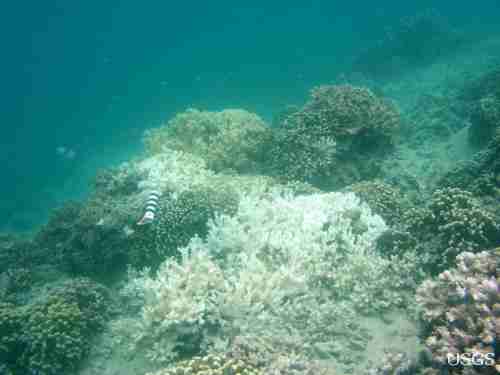It looks like you're using an Ad Blocker.
Please white-list or disable AboveTopSecret.com in your ad-blocking tool.
Thank you.
Some features of ATS will be disabled while you continue to use an ad-blocker.
2
share:
This is something to watch closely. The lose of coral reefs has a huge impact on the ocean's ecosystem. Hopefully this will remain isolated, and not
destroy a large area of the reef.
www.usgs.gov...

marinesciencetoday.com...
www.usgs.gov...
Scientists have discovered an outbreak of coral disease called Montipora White Syndrome in Kāneʿohe Bay, Oʿahu. The affected coral are of the species Montipora capitata, also known as rice coral.

Rice corals provide valuable habitat, shelter, and foraging grounds for a variety of tropical marine fish and invertebrates and provide the fundamental structure of coral reefs. Rice corals are especially important to Hawai‘i’s marine ecosystems because they are one of the more abundant coral reef species in the region.
Thus, loss of corals can have negative effects on many other reef-associated organisms. In fact, losing a coral reef is similar to losing a rainforest, with many species reliant on that ecosystem for survival.
In addition, coral reefs in Hawai‘i are an important source of tourism and other economic income (fisheries). For example, Kāneʿohe Bay, where this outbreak is concentrated, is a popular spot frequented by snorkelers, bathers, divers, boaters and fishermen.
While this particular disease outbreak seems limited to south Kāneʿohe Bay, coral diseases have the potential to be widespread, affecting large geographic regions. A prime example is the Western Atlantic and Caribbean where large tracts of coral reefs have either declined or disappeared due to diseases
The reasons for this increase in outbreaks are presently unknown. Tissue loss diseases like white syndrome are particularly insidious in that they result in immediate loss of coral cover. Often, dead corals are then overgrown by algae, leading to permanent reduction in corals reefs and a change in the ecosystem from a coral-dominated to an algae-dominated reef.
marinesciencetoday.com...
In March 2010, an outbreak of acute Montipora White Syndrome (MWS) destroyed over 100 colonies of rice coral, Montipora capitata. The same disease has reappeared and is killing corals again in Kane’ohe Bay. To date, the outbreak has affected 198 colonies. A rapid response team led by Dr. Greta Aeby has been called to document the outbreak. The team includes scientists from the University of Hawaii, Hawaii Institute of Marine Biology and USGS National Wildlife Health Center.
edit on 19-1-2012 by isyeye because: (no reason given)
new topics
-
Paradox of Progress
Ancient & Lost Civilizations: 4 hours ago -
Joe Biden gives the USA's Highest Civilian Honor Award to Hillary Clinton and George Soros.
US Political Madness: 6 hours ago -
Winter Storm
Fragile Earth: 7 hours ago -
Biden Face Planted Somewhere
Politicians & People: 9 hours ago -
A great artist and storyteller, for kids of all ages
General Entertainment: 9 hours ago
2
